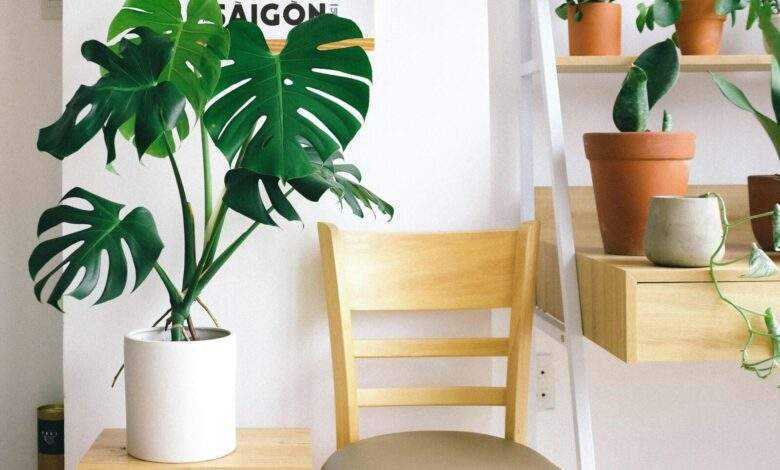5 Amazing Indoor Plants: 10 Easy Ways to Green Your Space

Table of Contents
5 Amazing Indoor Plants: Transform Your Space, Naturally
In our fast-paced, urban lives, it’s easy to forget the importance of connecting with nature. But bringing a bit of the outdoors in can have a profound impact on our well-being. 5 Amazing Indoor Plants can purify the air, reduce stress, boost our mood, and even increase productivity.
Imagine waking up to a serene bedroom filled with the gentle green of a peace lily, or working in an office with the air-purifying properties of a snake plant. These are just a few examples of how indoor plants can enhance our living and working spaces.
In this post, we’ll introduce you to five amazing indoor plants that are easy to care for and offer a multitude of benefits. From the classic peace lily to the trendy snake plant, we’ve got you covered. Whether you’re a seasoned plant parent or a beginner, you’ll find something to inspire you.
So, let’s dive into the world of indoor plants and transform your space into a serene oasis. Discover the joy of nurturing these natural wonders and reap the rewards of a healthier, happier, and more productive life.
Benefits of Indoor Plants
Indoor plants offer a myriad of benefits that extend beyond aesthetics. They are natural air purifiers, effectively removing harmful pollutants and toxins from indoor air, thereby promoting better health and overall well-being.
The Power of Indoor Plants: Air-Purifying Abilities
Indoor plants play a crucial role in filtering out volatile organic compounds (VOCs) such as formaldehyde, benzene, and trichloroethylene, which are commonly found in household items like furniture, carpets, and cleaning products. By absorbing these pollutants through their leaves and roots, plants significantly improve indoor air quality.
Psychological and Health Benefits
In addition to their air-purifying properties, indoor plants have been scientifically proven to reduce stress levels and improve mental health. The presence of greenery indoors creates a calming effect, enhancing relaxation and fostering a positive environment.
Natural Humidifiers
Certain indoor plants release moisture into the air through transpiration, which helps combat dry indoor air conditions, particularly in winter or heated environments. This natural humidifying effect can alleviate respiratory issues and improve skin hydration.
Aesthetic Enhancement
Beyond their functional benefits, indoor plants add natural beauty and a touch of greenery to interior spaces. They come in various shapes, sizes, and colors, allowing for personalized decor that enhances the overall ambiance of any room.
Connection to Nature
Bringing elements of nature indoors promotes a sense of connection with the natural world, even in urban settings. This connection has been shown to boost mood, increase productivity, and create a more pleasant living or working environment.
- Resources:
- Learn more about the benefits of indoor plants. University of Nebraska-Lincoln – Benefits of Houseplants
Impact of Plants on Air Quality
Indoor plants are instrumental in improving air quality by reducing concentrations of indoor air pollutants. Understanding their specific air-purifying abilities can help you choose the most effective plants for your indoor environment.
Removal of Airborne Toxins
Plants such as the Peace Lily (Spathiphyllum), Spider Plant (Chlorophytum comosum), and Snake Plant (Sansevieria) are renowned for their ability to absorb and metabolize airborne toxins. These plants effectively filter pollutants like formaldehyde, benzene, and nitrogen oxides, which can originate from building materials and household products.
- Resources:
- Explore the impact of indoor plants on air quality. American Society for Horticultural Science – Indoor Plants and Air Quality

Plants for Cleaner Air: Choosing the Best Indoor Greenery
Selecting the right indoor plants involves considering their air-purifying abilities, maintenance requirements, and aesthetic appeal. Here’s a guide to choosing plants that effectively enhance indoor air quality.
Peace Lily (Spathiphyllum)
The Peace Lily is renowned for its elegant white blooms and exceptional air-purifying capabilities. It efficiently removes formaldehyde, benzene, and trichloroethylene from indoor air, making it ideal for bedrooms and living spaces.
- Resources:
- Learn how to care for Peace Lilies. Gardening Know How – Peace Lily Care Guide
- Discover tips on growing Peace Lilies. The Spruce – How to Grow and Care for Peace Lily Plants
Spider Plant (Chlorophytum comosum)
Adaptable and easy to grow, the Spider Plant effectively filters out carbon monoxide and xylene, common indoor pollutants. Its arching leaves and air-purifying qualities make it a popular choice for hanging baskets and shelves.
- Resources:
- Explore Spider Plant care tips. University of Vermont Extension – Spider Plant Care
- Learn how to grow Spider Plants. Gardeners’ World – How to Grow Spider Plants
Snake Plant (Sansevieria)
The Snake Plant is celebrated for its resilience and ability to thrive in low-light conditions while effectively filtering formaldehyde, nitrogen oxide, and benzene. Its architectural foliage adds a modern touch to any indoor setting.
- Resources:
- Discover Snake Plant care techniques. The Old Farmer’s Almanac – Snake Plant Care
- Read tips on growing Snake Plants. Gardening Know How – Growing Snake Plants
Boston Fern (Nephrolepis exaltata)
With its feathery fronds and preference for high humidity, the Boston Fern not only adds lush greenery to spaces but also helps maintain indoor moisture levels. It excels at filtering pollutants and is well-suited for bathrooms and kitchens.
- Resources:
- Learn about caring for Boston Ferns. Royal Horticultural Society – Boston Fern Care
- Explore a guide to Boston Fern care. Indoor Plants for Beginners – Boston Fern Care Guide
Bamboo Palm (Chamaedorea seifrizii)
Compact and tolerant of low light, the Bamboo Palm thrives indoors while removing formaldehyde and benzene from the air. Its graceful foliage adds a tropical flair to interiors, making it a popular choice for offices and living rooms.
- Resources:
- Learn about Bamboo Palm care. Houseplant Central – Bamboo Palm Care
- Discover tips for caring for a Bamboo Palm. Joy Us Garden – How to Care for a Bamboo Palm
Maintaining Indoor Plants
Proper care and maintenance are essential to ensure indoor plants thrive and continue to provide air-purifying benefits year-round. Follow these tips to keep your indoor greenery healthy and vibrant.
Watering and Moisture Control
Water indoor plants thoroughly, allowing excess water to drain away. Adjust watering frequency based on plant species and environmental conditions to prevent issues like root rot or dehydration.
- Resources:
- Learn about watering indoor plants. Colorado State University Extension – Watering Indoor Plants
- Discover tips on watering houseplants. University of Illinois Extension – Watering Houseplants
Lighting Needs and Placement
Position plants near windows or under grow lights to ensure they receive adequate light for photosynthesis. Rotate plants regularly to promote even growth and prevent leaf yellowing.
- Resources:
- Explore indoor plant lighting tips. University of Minnesota Extension – Indoor Plant Lighting
- Learn about lighting indoor plants. Arizona State University – Lighting Indoor Plants
Pruning and Grooming Practices
Remove dead or yellowing leaves promptly to maintain plant health and appearance. Prune overgrown stems to encourage new growth and maintain an attractive shape.
- Resources:
- Discover tips for pruning houseplants. Penn State Extension – Pruning Houseplants
- Learn about houseplant pruning basics. University of Florida IFAS Extension – Houseplant Pruning Basics
Pest Management
Regularly inspect plants for pests such as spider mites or aphids. Use natural pest control methods like neem oil or insecticidal soap to treat infestations without harming plant health.
- Resources:
- Explore indoor plant pest management. University of California Agriculture and Natural Resources – Indoor Plant Pest Management
- Learn about houseplant pest control. University of Wisconsin-Madison Division of Extension – Houseplant Pest Control
Seasonal Adjustments and Care
Adjust care routines seasonally to accommodate changes in temperature, humidity, and daylight hours. Provide additional humidity during dry winter months and reduce watering frequency in cooler temperatures.
- Resources:
- Discover seasonal care tips for houseplants. University of Missouri Extension – Seasonal Care of Houseplants
- Learn about seasonal adjustments for indoor plants
. University of Tennessee Extension – Seasonal Care of Indoor Plants
Choosing Indoor Plants for Specific Rooms
Different rooms have varying light conditions, humidity levels, and space constraints. Selecting plants that thrive in specific environments ensures they not only survive but also flourish.
Bedroom Plants
Plants like the Peace Lily and Snake Plant are excellent choices for bedrooms due to their air-purifying qualities and ability to enhance relaxation.
- Resources:
- Explore bedroom plant ideas. The Spruce – Best Bedroom Plants
- Learn about plants that improve sleep quality. Healthline – Plants That Help You Sleep Better
Office Plants
Incorporate low-maintenance plants such as the Spider Plant and ZZ Plant into office spaces to boost productivity and air quality without requiring extensive care.
- Resources:
- Discover office plant ideas. Architectural Digest – Best Office Plants
- Learn about plants that thrive in low-light office environments. Real Simple – Best Plants for Low-Light Offices
Kitchen Plants
Herbs like Basil and Mint thrive in well-lit kitchen environments, providing fresh ingredients for cooking while improving indoor air quality.
- Resources:
- Explore kitchen herb garden ideas. HGTV – Kitchen Herb Gardens
- Learn about herbs that grow well indoors. Better Homes & Gardens – Indoor Herb Garden Ideas
Bathroom Plants
Plants such as the Boston Fern and Orchids thrive in high-humidity bathrooms, adding a touch of greenery while benefiting from the moisture-rich environment.
- Resources:
- Discover bathroom plant ideas. Gardenista – Best Bathroom Plants
- Learn about plants that thrive in humid conditions. The Spruce – Best Plants for Bathrooms
By incorporating these 5 Amazing Indoor Plants into your home or office, you can create a healthier, more beautiful, and calming environment. Each plant has its own unique benefits and care requirements, so do your research to find the perfect plants for your space.
- Peace Lily: This elegant plant is known for its air-purifying abilities and ability to remove toxins from the air. It prefers bright, indirect light and moist soil.
- Snake Plant: This low-maintenance plant is a great choice for beginners. It can tolerate low light and infrequent watering.
- Rubber Plant: This sturdy plant is a great choice for busy people. It can tolerate low light and infrequent watering.
- Aloe Vera: This succulent plant is known for its healing properties. It can help soothe burns and skin irritations.
- Spider Plant: This easy-care plant is a great choice for hanging baskets or tabletop displays. It can help remove toxins from the air and improve air quality.
Remember, a little care and attention can go a long way in keeping your indoor plants thriving. By providing the right amount of light, water, and nutrients, you can enjoy the many benefits of these natural air purifiers and mood boosters.
Are indoor plants really effective at improving air quality?
Indoor plants are indeed effective air purifiers. They absorb pollutants like formaldehyde and benzene through their leaves and roots, contributing to cleaner indoor air.
Which indoor plants are best for purifying air?
Plants like Peace Lily, Spider Plant, Snake Plant, and Boston Fern are excellent choices for air purification due to their ability to filter out various indoor pollutants.
How many plants do I need to improve air quality in my home?
The number of plants needed depends on factors like room size and plant species. As a general guide, aim for one medium-sized plant per 100 square feet of space.
Can indoor plants reduce humidity in my home?
Certain plants, like Peace Lily and Boston Fern, release moisture through transpiration, which can help regulate indoor humidity levels, especially in dry environments.
What are some low-maintenance indoor plants for beginners?
Beginner-friendly plants include Snake Plant, ZZ Plant, and Pothos. They require minimal care and can thrive in various light conditions.
How do I know if my indoor plants are getting enough light?
Monitor your plants for signs of light deficiency, such as yellowing leaves or stunted growth. Place plants near windows or under grow lights to ensure adequate light exposure.
What are the best indoor plants for low-light conditions?
Plants like Snake Plant, ZZ Plant, and Peace Lily are well-suited for low-light environments and can thrive with minimal natural light.
How often should I water my indoor plants?
Watering frequency varies by plant species, room temperature, and humidity levels. Generally, allow the soil to dry slightly between waterings to prevent overwatering.
How can I prevent pests from infesting my indoor plants?
Regularly inspect plants for pests like spider mites or aphids. Use natural pest control methods such as neem oil or insecticidal soap to treat infestations promptly.
What are some benefits of having indoor plants beyond air quality?
Indoor plants offer psychological benefits, such as stress reduction and improved mood. They also enhance interior aesthetics and promote a sense of well-being.








